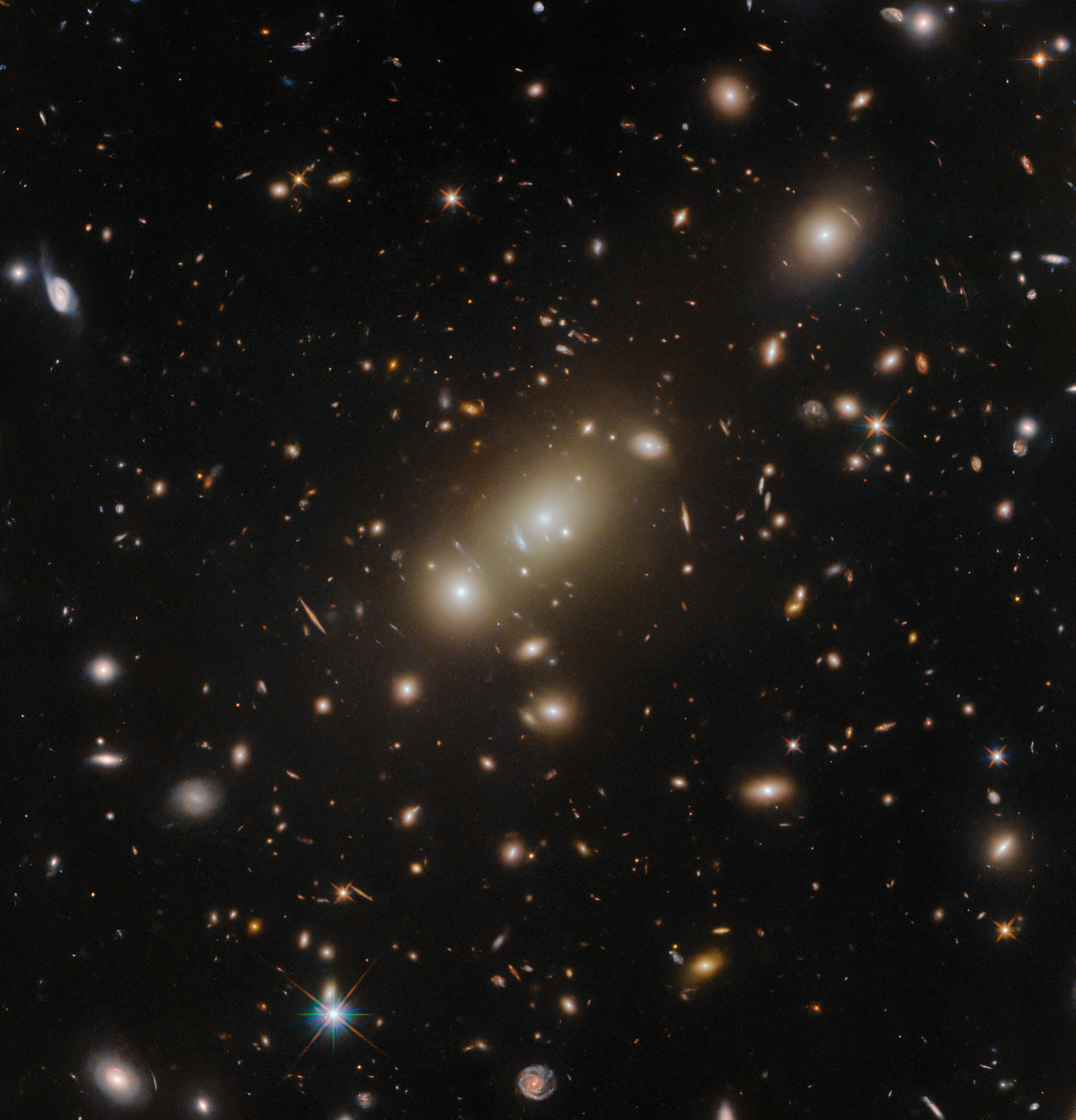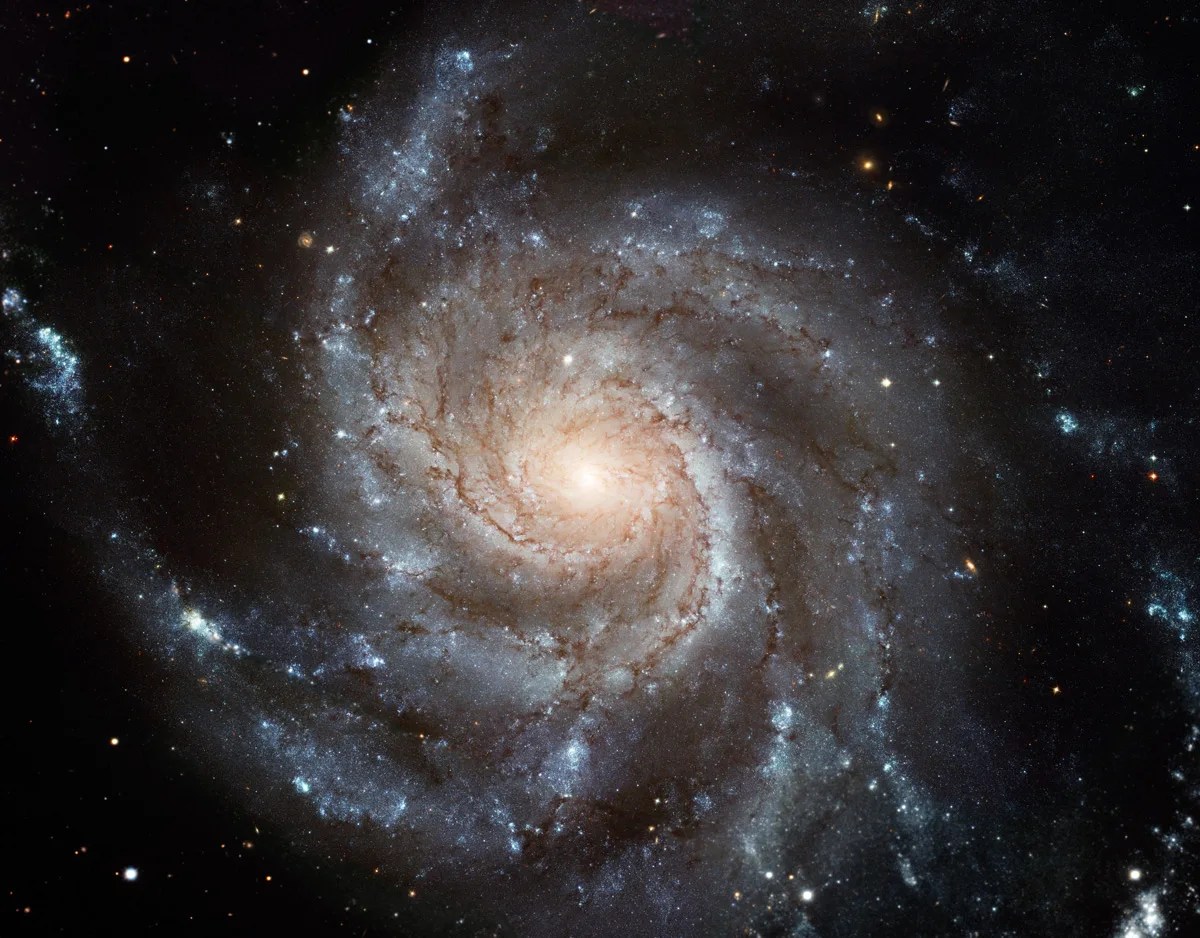2 min read

The massive cluster Abell 3322 is featured in this image from the NASA/ESA Hubble Space Telescope, in which the galaxy 2MASX J05101744-4519179 basks in the center. This distant galaxy cluster is a cosmic leviathan that is highly luminous at X-ray wavelengths. Observing galaxy clusters like Abell 3322 can advance our understanding of the evolution and interactions of dark and luminous matter in galaxy clusters, and also reveals powerful gravitational ‘telescopes’ that magnify distant objects through gravitational lensing. Knowing the location of these lenses can enable future observations with both Hubble and the NASA/ESA/CSA James Webb Space Telescope. The galaxy cluster is located in the constellation Pictor, around 2.6 billion light-years from Earth.
Two of Hubble’s instruments joined forces to create this image: Wide Field Camera 3 and the Advanced Camera for Surveys. Both are third-generation instruments that offer superb image quality and high sensitivity to astronomers studying a range of scientific questions. Both instruments provide images of wide areas of the night sky, but view slightly different parts of the electromagnetic spectrum. WFC3 spans the spectrum from the ultraviolet through to visible light and the near-infrared. In contrast to the wide panchromatic coverage of WFC3, ACS was optimized for visible-light observations.
Text credit: European Space Agency (ESA)
Image credit: ESA/Hubble & NASA, H. Ebeling
Media Contact:
Claire Andreoli
NASA's Goddard Space Flight Center, Greenbelt, MD
claire.andreoli@nasa.gov




